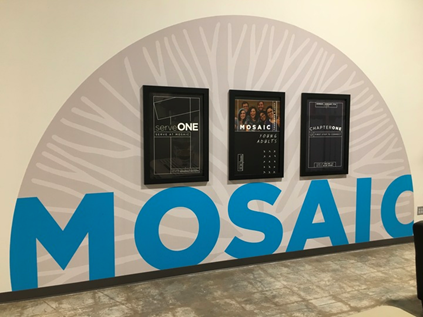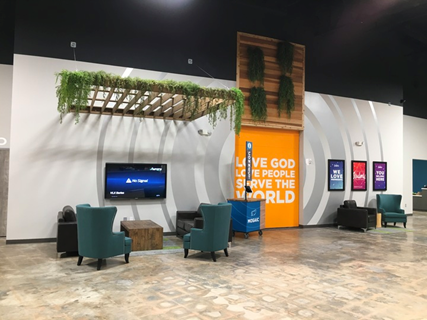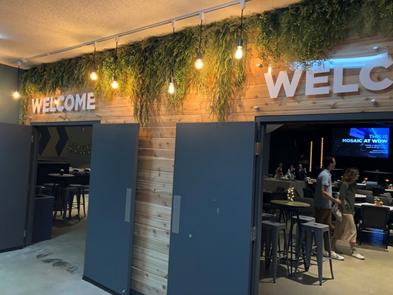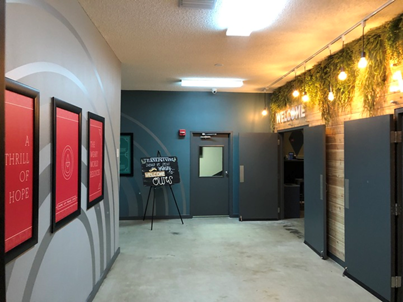8 Questions to Ask Before Your Church Goes Multisite
Is your leadership team considering adding a campus (or two) to your growing church?
Becoming a multisite church is a significant step in your growth and development. Before you add a second, third, or fourth campus, there are some important questions to ask and factors to take into consideration. Lasting, sustained growth takes strategy, a thorough understanding of who you are as a church and your purpose in the Kingdom, and a well-thought-out approach to conveying that information to your members, visitors, community, and beyond.
Here are a few important questions to ask and best practices to follow as you begin adding locations to your church.
1. What’s our unique story?
Do you know your church’s unique story?
As humans, God has wired us to be moved and transformed by story. At PlainJoe, we’re committed to finding your church’s story, defining its unique place in the Kingdom, and then helping you express that story everywhere we can. That work is core to every project we engage in, for churches of all sizes.
If you’re not clear on the story you want your church and its campuses to tell, it’s time to explore that question. Gather your leadership team to get clear on important parts of your church’s identity – not only the story, but the visual brand, too. Figuring out all these crucial pieces will help to tell your whole story and anchor your visuals back to the reason why you serve.
Getting crystal clear on your church’s story is foundationally important to going multisite, and that story should follow your members and visitors no matter what campus they attend.
2. Does our visual brand help or hinder our story?
When it comes to your story, we believe that “everything speaks,” whether intentional or not.
Once you have your story in place, it’s important to hone in on how you’re going to help each site look and feel as if it’s linked to not only your story, but your home campus as well. When members and visitors alike step inside any one of your sites, they should be able to know right away that the church is an extension of your community.
In short, this is known as your brand. Branding your church well, then extending that branding to other campuses, is the secret to helping each location feel like a cohesive part of the greater whole. Knowing how to tie your campuses together visually will make all the difference as your church begins to expand beyond its primary location.
3. Do our logos, fonts, and colors evoke the right emotions?
Your logos, fonts, and colors are the baseline of your visual brand. They help visually represent the emotions you’re trying to convey and need to fit your story. If you haven’t yet solidified what your visual brand is, it’s important to do so before you add locations. This is a bare minimum requirement for multi-site churches.
You want to make sure that this visual branding is an accurate representation of your church and the work you’re doing in your community (and the world beyond). It’s super important that all logos and related fonts and colors are executed well anywhere they are used.
4. Do we have a standardized brand style guide?
You’ll need a standardized style guide that you can use to train and equip local leaders. Once they’re familiar with your visual branding, don’t forget to make sure they have all brand fonts and logo files in-hand.
Campus leaders can’t always count on central ops to get them what they need on time. They will need to self-execute last minute creative items at times. If they have what they need, you’ll minimize brand confusion.
5. Is our wayfinding and placemaking signage attractive, functional, and clear?
Whether you have taken over a building 24-7 or are only renting on the weekends, really good signage is the fastest and cheapest way to truly “own” a space. Wayfinding signage helps your members and visitors know exactly where to go from the time they arrive on your campus.
Placemaking signs, on the other hand, give you a chance to use attractive signage to tell guests and members what your church is all about.
There are other types of signs you can create to convey more of your story in your space, too. In addition to standard sandwich board signs and feather banners flapping in the wind, consider things like branded pop-up tents for visitors or coffee.
At PlainJoe, we always take time to create a Graphics Layout Plan for any building we work on. Every piece of signage you create, whether it’s permanent or temporary, is a chance to reinforce the story (brand) from your original campus. Notice how this church used sets of three posters over a gray wall vinyl pattern at multiple campuses as a visual connection.
6. Do our wall colors fit with our visual branding?
Assuming your original campus has a well-defined paint plan and range of coordinating colors to use throughout the building, you can easily extend that color scheme to a new campus. This creates a tie-in to your primary location. If you’re reading this and thinking, “a paint what?”… it’s probably time to update and streamline your paint colors at the original campus. Then, you can roll out that new look at both campuses simultaneously.
7. How’s our decor?
Decorative touches can be intentional design touches at your original campus that you can bring over to the new campus. For example, see how this church used accent walls covered by light cedar wood, along with artificial plants and vintage exposed-bulb light fixtures? A look like this can be easily reproduced at every campus.
This particular campus was a new multisite addition to Mosaic Church, whose main campus is based in Winter Garden, Florida. The original campus’s core story is all about returning to the Garden. Therefore, adding greenery to the new space served to extend that story into the newest location.
8. Do we want to extend or refresh our kids’ ministry theming?
If your kids’ ministry has intentional design in places like the check-in area, hallways, and large group rooms, this should be easily reproduced at the new campus. On the other hand, if your kids’ area is in need of a refresh, you could start with the new campus and work your way back to the larger campus once the updated theming is developed. The last thing you want is for parents to feel like they are taking a massive step down by switching to the “new campus.”
At PlainJoe, we spend significant time developing the graphics and theming for a particular church and building. Even if you have a painted mural on a kids’ wall, it probably started as a digital design on a computer. Therefore, it’s easy to scale it for a different building at a new campus. You could even have it printed on fabric if you are using pipe-and-drape at a set-up/tear down campus.
Conclusion
Crafting your church’s strategic, unique story will help you connect your digital and physical spaces for a cohesive experience across all campuses. And when it comes to keeping your multisite campuses visually aligned, you can go as far as your schedule and budget will allow – the creative possibilities are endless.
If you’re ready to explore the many possibilities for updating and aligning your visual brand, PlainJoe is here to help. Contact us here to get the conversation started!


















